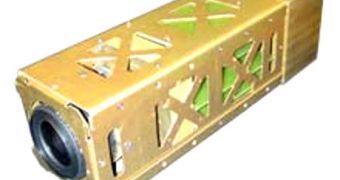Next year will see the first launch of a nanosatellite designed specifically to look for Earth-like extra solar planets. This will mark the first time that such a small scientific instrument is used to conduct such laborious research.
According to analysts, if the mission is successful, then its creators will have successfully demonstrated that it doesn't take instruments the size and complexity of the NASA Kepler Telescope to conduct this type of studies.
The miniature spacecraft is being developed by experts with the Massachusetts Institute of Technology (MIT), in Cambridge, and the Draper Laboratory. Its main mission will be to discover exoplanets that are capable of supporting life.
In order to do so, it will be equipped with the latest generation of high-performance optics systems, as well as with new control and stabilization technologies. All these capabilities will be packed tightly in a very small package, called ExoPlanetSat.
“We are doing something that has not been done before,” explains the director of Draper Space Systems, Séamus Tuohy. He explains that, generally, nanosatellites are used for simpler tasks, such as Earth observations, Technology Review reports.
ExoPlanetSat will conduct its observations via a technique called transit observation. This means that it will search for traces of dimming in the brightness of stars, that could be indicative of the fact that objects in their orbit are obscuring the view.
If the dimming is periodical, then experts can analyze the orbit an exoplanet is in, and determine how far away the object is from its parent star. This in turn provides a deeper understanding of the chances the planetary body has of supporting life.
According to MIT planetary science and physics professor Sara Seager, the new spacecraft is not meant to replace larger, orbital telescopes, but rather to augment their capabilities. ExoPlanetSat will focus its attention on stars that have been deemed of interest by other observatories.
The custom avionics stage on the new nanosatellite was designed in such a way so that it prevents any shaking to the observatory. If this happens, then the data ExoPlanetSat produces become useless.
“Any disturbances that shake the spacecraft will blur the image and make the measurements unusable. And smaller spacecrafts are easier to push around,” Seager explains. But she adds that the instruments on the new spacecraft are well-suited for preventing such a scenario.

 14 DAY TRIAL //
14 DAY TRIAL //